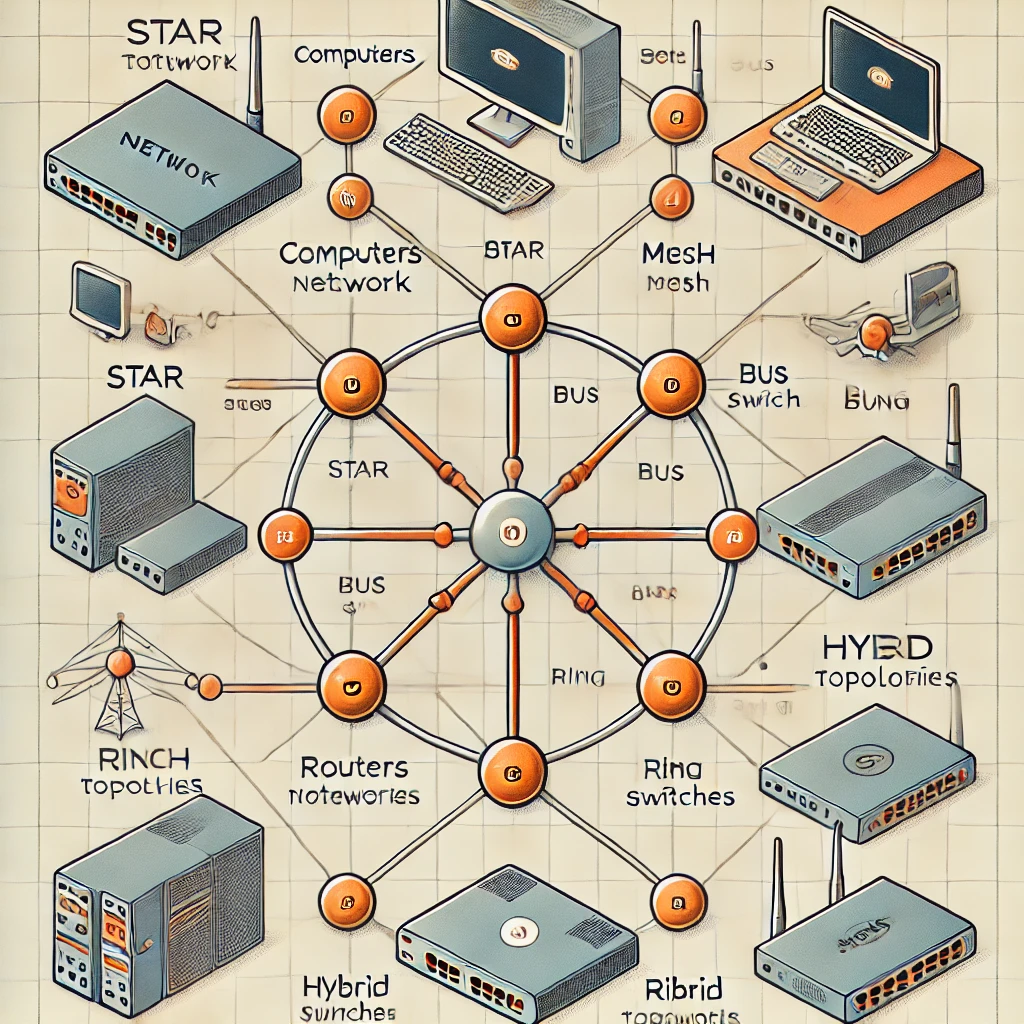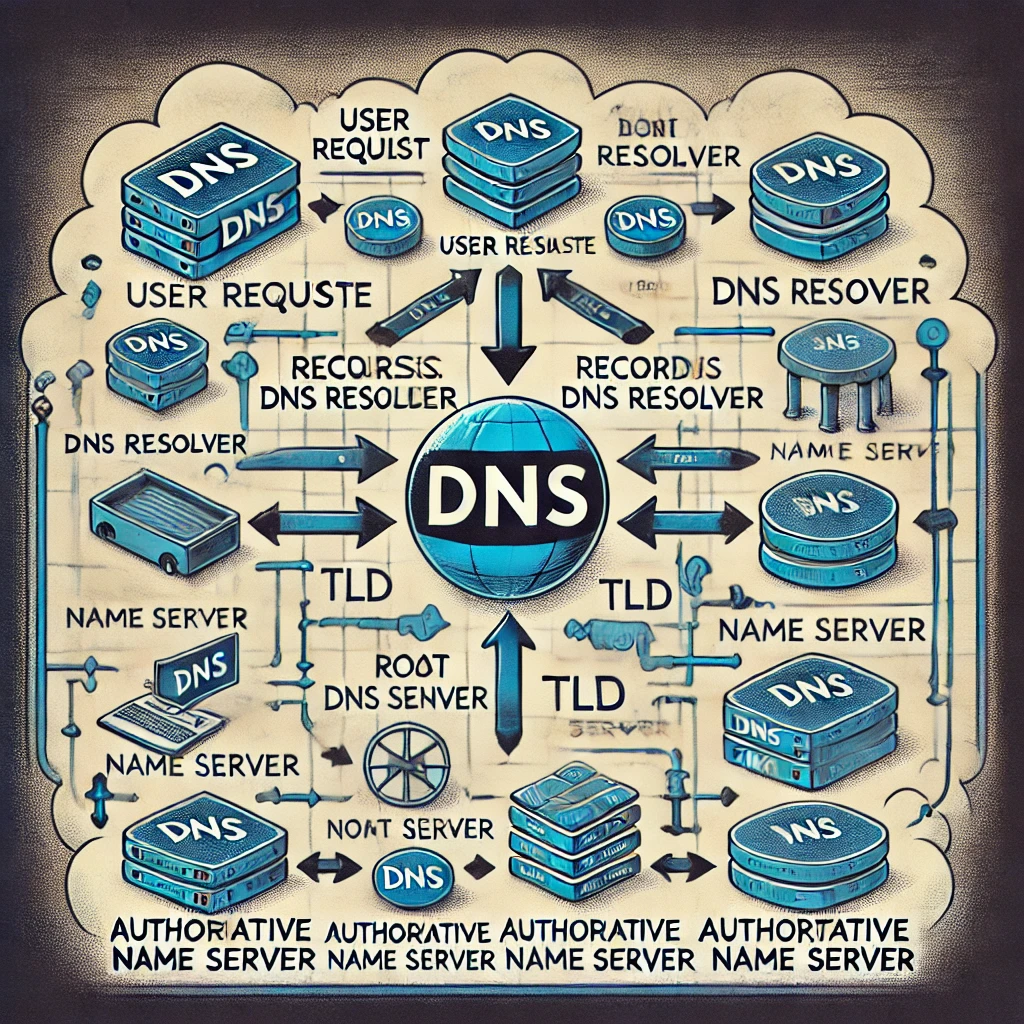A well-designed network topology is essential for efficiency, reliability, and scalability in any IT infrastructure. Whether setting up a home network or designing a large enterprise system, understanding different network topologies helps you choose the best structure to optimize performance and security.
In this guide, we’ll explore the most common network topologies—star, mesh, bus, ring, and hybrid—their advantages, disadvantages, and best use cases.
🔍 What is a Network Topology?
A network topology is the physical or logical layout of devices in a network. It defines how computers, switches, routers, and other components connect and communicate.
There are two main types of network topologies:
- Physical Topology – The actual layout of devices and cables.
- Logical Topology – How data flows across the network, regardless of physical structure.
Choosing the right topology depends on factors such as cost, performance, scalability, and fault tolerance.
🌐 Types of Network Topologies
1️⃣ Star Topology
The star topology is one of the most commonly used network designs. All devices connect to a central hub or switch, which manages network traffic.
📌 How It Works:
- Each device has a dedicated link to the central hub.
- The hub/switch directs data between devices.
✅ Advantages:
✔ Easy to install and manage.
✔ High performance since each device has a dedicated link.
✔ Failure of one device does not affect others.
❌ Disadvantages:
✖ The central hub is a single point of failure.
✖ More cabling is required compared to bus topology.
🔹 Best For: Home networks, small businesses, and enterprise LANs.
2️⃣ Mesh Topology
In a mesh topology, every device is connected to every other device, ensuring redundancy and fault tolerance. It can be fully connected (each node linked to every other) or partially connected (some nodes connected to multiple others).
📌 How It Works:
- Each node relays data dynamically using the best available path.
- Wireless networks often use a mesh design for reliability.
✅ Advantages:
✔ Highly fault-tolerant—if one link fails, traffic is rerouted.
✔ No single point of failure.
✔ High reliability and security.
❌ Disadvantages:
✖ Expensive and complex to set up.
✖ Requires more cabling and network resources.
🔹 Best For: Large enterprise networks, data centers, and mission-critical applications.
3️⃣ Bus Topology
In a bus topology, all devices share a single communication line (backbone) for data transmission. Devices are connected via this main cable.
📌 How It Works:
- A single backbone cable carries all network traffic.
- Devices communicate by broadcasting data along the backbone.
✅ Advantages:
✔ Simple and inexpensive to set up.
✔ Requires less cable than star or mesh topology.
❌ Disadvantages:
✖ A failure in the main cable disrupts the entire network.
✖ Performance degrades with high traffic.
✖ Troubleshooting can be difficult.
🔹 Best For: Small networks, temporary setups, and legacy systems.
4️⃣ Ring Topology
In a ring topology, devices are connected in a circular structure. Data travels in one direction (unidirectional) or both directions (bidirectional) to prevent failures.
📌 How It Works:
- Each device is connected to two others, forming a ring.
- Data passes through each device in sequence.
✅ Advantages:
✔ Predictable performance since data follows a structured path.
✔ Less cable required than star and mesh.
❌ Disadvantages:
✖ A single break in the ring disrupts the entire network (unless a dual-ring setup is used).
✖ Troubleshooting and adding new devices can be difficult.
🔹 Best For: Legacy token ring networks and specialized applications (e.g., fiber optic rings in telecom).
5️⃣ Hybrid Topology
A hybrid topology is a combination of two or more network topologies, such as star-bus or mesh-ring. It is highly flexible and commonly used in large enterprises.
📌 How It Works:
- Multiple topologies are interconnected to combine benefits.
- Example: A corporate WAN may use mesh for critical locations and star topology for local offices.
✅ Advantages:
✔ Highly scalable and flexible.
✔ Can be tailored for specific needs.
✔ Combines strengths of different topologies.
❌ Disadvantages:
✖ More complex and costly than single topology networks.
✖ Requires careful design and planning.
🔹 Best For: Large businesses, cloud-based infrastructures, and service provider networks.
📊 Comparison of Network Topologies
| Topology | Scalability | Fault Tolerance | Performance | Cost |
|---|---|---|---|---|
| Star | ✅ High | ⚠️ Medium | ✅ High | 💲💲💲 Medium |
| Mesh | ✅ Very High | ✅ Very High | ✅ Very High | 💲💲💲💲 Expensive |
| Bus | ⚠️ Low | ❌ Low | ⚠️ Medium | 💲 Low |
| Ring | ⚠️ Medium | ⚠️ Medium | ✅ High | 💲💲 Medium |
| Hybrid | ✅ Very High | ✅ High | ✅ High | 💲💲💲 High |
🛠 Choosing the Right Network Topology
The best network topology depends on cost, reliability, scalability, and performance requirements.
✔ Star Topology – Best for small and medium businesses, home networks.
✔ Mesh Topology – Best for large enterprises, data centers, and mission-critical applications.
✔ Bus Topology – Suitable for small, budget-friendly networks.
✔ Ring Topology – Useful for legacy networks and telecom applications.
✔ Hybrid Topology – Ideal for scalable and complex enterprise networks.
🎯 Final Thoughts
Choosing the right network topology is crucial for optimizing performance, security, and cost-effectiveness. Whether setting up a home Wi-Fi network or designing a corporate infrastructure, selecting the correct layout ensures efficient communication and long-term scalability.
💡 Need expert networking advice? Follow Packet-Switched.com for more IT insights and best practices! 🚀




